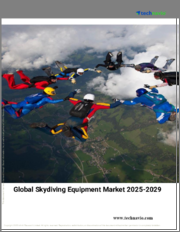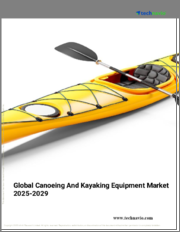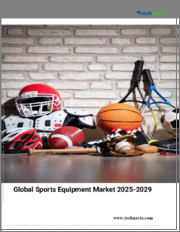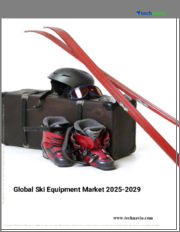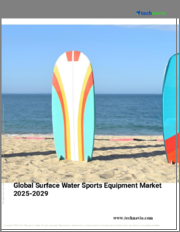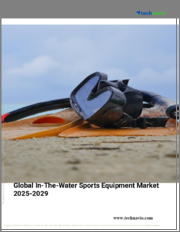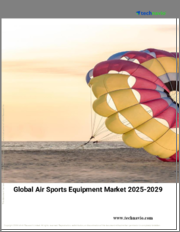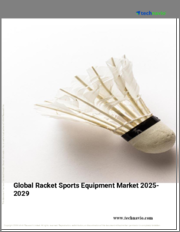
|
시장보고서
상품코드
1845730
세계의 스포츠 용품 및 의류 시장 규모 : 제품 유형별, 스포츠 유형별, 유통 채널별, 지역 범위별 예측Global Sports Equipment And Apparel Market Size By Product Type, By Sports Type, By Distribution Channel, By Geographic Scope And Forecast |
||||||
스포츠 용품과 의류 시장 규모와 예측
스포츠 용품·의류 시장 규모는 2024년에 5억 1,632만 달러로 평가되며, 2026-2032년의 예측 기간 중 CAGR 6.14%로 성장하며, 2032년에는 8억 2,845만 달러에 달할 것으로 예측됩니다.
스포츠 장비 및 의류 시장은 다양한 스포츠 및 신체 활동에 사용하도록 특별히 설계된 장비, 장비 및 의류를 생산, 판매 및 유통하는 산업으로 정의됩니다. 이 시장은 프로 운동선수와 레크리에이션 애호가 모두를 위한 시장입니다.
이 시장의 주요 구성 요소는 다음과 같습니다.
스포츠 용품 : 스포츠 용품 : 특정 스포츠에 필수적인 아이템으로 성능, 안전, 규칙 준수를 돕습니다. 예를 들어 공, 배트, 라켓, 라켓, 골대, 보호구(헬멧, 패드), 피트니스 기구(웨이트, 저항 밴드), 전용 액세서리 등.
스포츠 의류: 운동용으로 디자인된 의류 및 신발. 편안함, 유연성, 통기성, 흡습속건성에 중점을 둔 디자인과 소재가 특징입니다. 예를 들어 유니폼, 반바지, 레깅스, 컴프레션웨어, 러닝, 농구, 사이클링 등 특정 스포츠에 맞는 운동화 등이 있습니다.
시장의 성장은 다음과 같은 몇 가지 요인에 의해 주도되고 있습니다.
건강과 피트니스에 대한 인식 증가: 건강한 라이프스타일과 신체적 건강을 추구하는 세계적인 추세 증가.
기술 혁신 : 스마트 섬유, 웨어러블 기술, 지속가능한 패브릭 등 소재와 디자인의 발전.
스포츠 및 피트니스 활동 참여 증가: 여성과 어린이를 포함하여 점점 더 많은 사람들이 조직화된 스포츠 및 레크리에이션 활동, 홈트레이닝에 참여하고 있습니다.
세계 스포츠 용품 및 의류 시장 성장 촉진요인
세계 스포츠 용품 및 의류 시장은 사회 변화, 기술 발전, 소비자 취향의 진화가 맞물려 강력한 성장세를 보이고 있습니다. 개인의 건강 지향성 증가부터 온라인 쇼핑의 편리함까지 몇 가지 주요 촉진요인이 이 역동적인 산업을 형성하고 있습니다. 이러한 요인을 이해하는 것은 경쟁 환경에서 성공하고자 하는 기업에게 매우 중요합니다.
건강 및 피트니스에 대한 인식 증가: 좌식 생활, 만성질환, 건강 전반에 대한 관심 증가는 소비자 행동에 큰 영향을 미치고 있으며, 건강 및 피트니스에 대한 인식이 스포츠 용품 및 의류 시장의 주요 촉진요인으로 작용하고 있습니다. 개인들이 신체 활동의 이점에 대해 더 많이 알게 됨에 따라 피트니스 여정을 지원하는 적절한 장비에 투자하려는 의지가 높아지고 있습니다. 이러한 인식 증가는 운동화, 요가 매트, 가정용 운동기구, 운동 능력 향상 의류에 이르기까지 모든 것에 대한 강력한 수요로 이어집니다. 자사 제품의 건강상 이점과 성능상 이점을 효과적으로 전달하는 브랜드는 건강 지향적인 소비자층을 확보할 수 있는 유리한 입지를 점하고 있습니다.
스포츠 참여자 증가: 전 세계에서 스포츠 참여자 증가는 스포츠 용품 및 의류 부문에 중요한 기폭제가 되고 있습니다. 조직화된 팀 스포츠든, 개인 피트니스 활동이든, 레크리에이션 운동이든, 더 많은 사람들이 적극적으로 몸을 움직이기 위해 노력하고 있습니다. 이러한 참여자 급증은 청소년 리그에 참가하는 어린이부터 자전거 타기나 하이킹과 같은 새로운 취미를 시작하는 성인에 이르기까지 모든 계층에 걸쳐 있습니다. 새로운 참가자들은 기술 수준에 관계없이 전용 장비, 웨어, 액세서리를 필요로 하므로 지속적으로 수요가 증가하고 있습니다. 또한 아웃도어 활동의 부활과 다양한 피트니스 레짐의 인기도 신규 고객의 안정적인 유입과 재구매를 보장하는 원동력으로 작용하고 있습니다.
애슬레저와 퍼포먼스 웨어의 인기: 애슬레저와 퍼포먼스 웨어의 급격한 인기는 운동복이 체육관의 틀을 넘어 일상 패션의 필수품으로 탈바꿈했습니다. 이러한 동향은 프로 운동선수와 본격적인 애호가뿐만 아니라 편안함, 스타일, 범용성을 추구하는 폭넓은 소비자층에게 어필하며 스포츠 의류 시장을 크게 확대했습니다. 소비자들은 이제 운동에서 사교적인 외출까지 원활하게 전환할 수 있는 의류를 원하고 있으며, 기능성 소재가 성능상 이점과 미적 매력을 모두 제공하는 의류를 원하고 있습니다. 혁신적인 디자인과 고급스럽고 편안한 소재를 잘 결합한 브랜드는 이러한 라이프스타일의 변화를 이용해 스타일리시한 레깅스, 기능성 후드티, 활동적이면서도 캐주얼하게 입을 수 있는 고급 스니커즈와 같은 아이템의 판매를 주도하고 있습니다.
기술 혁신 : 기술 혁신은 스포츠 용품 및 의류 시장의 발전과 소비자의 관심을 높이는 강력한 원동력이 되고 있습니다. 통기성과 흡습성을 높인 획기적인 원단 구성부터 센서와 데이터 추적 기능을 통합한 스마트 기기까지 기술은 끊임없이 한계를 뛰어넘고 있습니다. 스마트워치와 피트니스 트래커와 같은 웨어러블 기술은 성능 및 건강 지표를 모니터링함으로써 이러한 추세를 더욱 보완하고, 호환 가능한 의류 및 액세서리에 대한 추가 수요를 창출하고 있습니다. 이러한 기술 혁신은 운동 성능, 편안함, 안전성을 향상시킬 뿐만 아니라 최첨단 기능으로 소비자를 흥분시키고 다양한 제품 카테고리에서 업그레이드 및 신규 구매를 유도하고 있습니다.
E-Commerce와 소비자 직접 판매 채널: E-Commerce와 소비자 직접 판매(DTC) 채널의 확산은 스포츠 용품 및 의류의 판매 및 구매 방식에 혁명을 가져왔으며, 시장의 매우 중요한 촉진요인으로 작용하고 있습니다. 온라인 플랫폼은 비교할 수 없는 편리함을 제공하며, 소비자는 언제 어디서나 풍부한 제품 카탈로그를 검색하고, 가격을 비교하고, 리뷰를 읽고, 구매할 수 있습니다. DTC 모델을 통해 브랜드는 고객과의 관계를 더욱 공고히 하고, 귀중한 데이터를 수집하고, 독점적인 제품을 경쟁력 있는 가격으로 제공할 수 있습니다. 이러한 변화로 인해 전문 장비에 대한 접근성이 민주화되고 세계 시장이 개방되면서 소규모 브랜드도 기존 기업과 경쟁할 수 있게 되었으며, 소비자에게는 그 어느 때보다 다양한 선택권을 제공하게 되었습니다.
가처분소득 증가와 도시화: 가처분소득 증가와 도시화라는 두 가지 동향이 스포츠용품과 의류에 대한 소비지출을 크게 끌어올리고 있습니다. 경제가 성장하고 많은 사람들이 도심으로 이주함에 따라 가처분 소득이 일반적으로 증가하여 소비자는 여가 활동, 피트니스, 프리미엄 라이프스타일 제품에 더 많은 돈을 쓸 수 있게 됩니다. 도시 환경은 피트니스 동향에 대한 인식을 높이고 체육관, 스포츠 시설, 전문 소매점에 대한 접근을 용이하게 하여 수요를 더욱 자극합니다. 도시에 거주하는 사람들은 역동적인 라이프스타일을 지원하기 위해 고품질 장비와 세련된 액티브웨어에 투자하는 경향이 강하므로 이러한 인구 통계와 경제의 변화는 시장 확대를 위한 비옥한 토양을 만들어 냅니다.
정부 구상과 인프라 개발: 정부 구상과 인프라 개발은 신체 활동 문화를 육성함으로써 스포츠 용품 및 의류 시장 육성에 중요한 역할을 합니다. 학교 프로그램에 대한 자금 지원, 공공 피트니스 캠페인, 새로운 스포츠 시설 건설 등을 통해 스포츠, 건강, 웰빙을 촉진하는 정책은 직접적으로 참여를 유도합니다. 공원, 자전거 도로, 커뮤니티 스포츠 센터, 레크리에이션 지역에 대한 투자는 사람들이 신체 활동을 할 수 있는 접근 가능한 공간을 만들어 적절한 장비와 복장에 대한 요구를 증가시킵니다. 이러한 정부의 구상은 현재 수요를 증가시킬 뿐만 아니라, 보다 활동적이고 건강 지향적인 인구를 육성함으로써 지속적인 시장 성장의 토대를 마련할 수 있습니다.
지속가능성 및 친환경 제품: 지속가능성 및 친환경 제품에 대한 소비자의 선호도가 높아지면서 스포츠 용품 및 의류 시장에 큰 영향을 미치고 있습니다. 환경 의식이 높아짐에 따라 소비자들은 윤리적 조달, 폐기물 감소, 재활용 및 지속가능한 소재 사용에 대한 노력을 보여주는 브랜드를 적극적으로 요구하고 있습니다. 이러한 수요는 환경에 미치는 영향을 최소화하는 제조 공정과 내구성이 뛰어나고 오래 지속되는 제품 개발 등의 분야에서 기술 혁신을 촉진하고 있습니다. 지속가능성을 자사의 핵심 가치와 제품 라인업에 효과적으로 녹여낸 브랜드는 소비자의 기대에 부응할 뿐만 아니라 경쟁 우위를 확보하여 환경의식이 높은 구매층의 브랜드 충성도를 높이고 있습니다.
커스터마이징과 개인화: 커스터마이징과 개인화 추세는 스포츠 용품 및 의류 시장의 강력한 촉진요인으로 부상하고 있으며, 소비자는 자신의 개성을 표현하고 성능을 최적화할 수 있습니다. 특정 체형에 맞는 맞춤형 신발과 의류부터 독특한 디자인과 이름이 새겨진 개인화된 툴에 이르기까지 소비자들은 자신의 취향에 딱 맞는 제품에 대해 더 많은 비용을 지불할 의향이 있습니다. 개인의 니즈에 초점을 맞추면 사용자 경험이 향상되고, 제품 효능이 개선되며, 강력한 브랜드 충성도를 구축할 수 있습니다. 기술의 발전과 함께 대량 맞춤화 옵션이 더욱 친숙해짐에 따라 브랜드는 다양한 취향에 대응하고 고객층과 더 깊은 관계를 맺을 수 있게 되었습니다.
세계 스포츠 용품 및 의류 시장 성장 억제요인
스포츠 용품 및 의류 시장은 큰 성장 촉진요인을 자랑하지만, 과제가 없는 것은 아닙니다. 경제적 압력에서 소비자 행동, 물류 장애물까지 다양한 억제요인이 시장 확대와 수익성을 저해할 수 있습니다. 이러한 제약조건을 이해하는 것은 이 역동적인 산업을 헤쳐나가는 비즈니스에 있으며, 매우 중요합니다.
프리미엄/첨단 제품의 높은 비용: 스포츠 용품 및 의류 시장의 주요 억제요인 중 하나는 프리미엄 제품 및 첨단 제품의 높은 비용입니다. 기술 혁신이 수요를 견인하는 한편, 첨단 소재, 스마트 기능, 지속가능한 부품의 통합으로 제조 비용이 크게 증가합니다. 이로 인해 최종 소매 가격이 상승하고, 특히 주류 시장과 신흥 시장에서 가격에 민감한 상당수의 소비자들이 이러한 고성능 품목을 구하기 어렵고 저렴하게 구입할 수 없게 되었습니다. 브랜드는 잠재적 고객층의 대부분을 소외시키지 않으면서도 혁신성을 제공해야 하는 미묘한 균형에 직면해 있습니다.
치열한 경쟁과 시장 포화: 스포츠 용품 및 의류 시장 특징은 치열한 경쟁과 시장 포화에 있습니다. 수많은 전통 있는 세계 브랜드와 더불어 신흥 기업과 개인 브랜드가 끊임없이 진입하여 혼잡한 상황을 만들어내고 있습니다. 이러한 치열한 경쟁은 종종 공격적인 가격 전략, 이익률 하락, 소비자의 관심을 끌기 위해 필요한 막대한 마케팅 비용으로 이어집니다. 신규 진출기업에게 제품 차별화와 브랜드 로열티 확립은 이미 깊숙이 파고든 경쟁사와의 치열한 싸움이 될 것이며, 성장 시장이라 하더라도 지속적인 성장은 어려울 것입니다. 또한 선택의 폭이 넓어지면서 소비자를 압도하고 구매 결정을 더욱 복잡하게 만들고 있습니다.
위조품 및 저품질 제품: 위조품 및 저품질 제품의 확산은 정품 스포츠 용품 및 의류 시장에 큰 억제요인으로 작용하고 있습니다. 모조품은 종종 현저하게 낮은 가격으로 판매되어 정품 브랜드의 매출과 시장 점유율을 직접적으로 잠식합니다. 금전적 손실뿐만 아니라 소비자들이 모조품의 낮은 성능이나 내구성이 부족한 모조품이 정품으로 착각해 브랜드 평판을 훼손할 수 있기 때문입니다. 또한 저품질 또는 가짜 보호 장비는 사용자에게 심각한 안전 위험을 초래할 수 있으며, 잠재적인 부상을 초래할 수 있으며, 시장 전체에 대한 소비자의 신뢰를 떨어뜨려 소비자들이 정품에 투자하는 것을 주저하게 만듭니다.
공급망 혼란과 원자재 가격 변동: 스포츠 용품 및 의류 시장은 공급망 혼란과 원자재 가격 변동에 매우 민감하게 반응합니다. 팬데믹, 지정학적 긴장, 자연재해와 같은 전 세계적인 사건은 제조, 물류, 유통 네트워크에 심각한 영향을 미쳐 제품 지연 및 결품으로 이어질 수 있습니다. 동시에 특수 섬유, 고무, 플라스틱, 금속 등 주요 원자재 가격의 변동은 생산 비용과 이익률에 직접적인 영향을 미칩니다. 문제는 이러한 비용 증가를 흡수하거나 소비자에게 전가할 수밖에 없는 경우가 많으며, 이는 수요 감소로 이어질 수 있으며, 예측 불가능한 세계 경제 상황 속에서 재고 계획과 가격 전략을 매우 어렵게 만들고 있습니다.
경제의 불확실성과 가처분소득의 제약: 경제의 불확실성과 가처분소득의 제약은 특히 재량지출을 원동력으로 하는 시장에서는 큰 억제요인으로 작용합니다. 경기 침체, 불황, 고인플레이션 시기에는 소비자들이 필수품이나 서비스를 우선시하고, 새로운 스포츠 용품이나 유행하는 의류 등 비필수품에 대한 쇼핑을 자제합니다. 이러한 소비 지출의 감소는 스포츠 브랜드의 판매량과 매출에 직접적인 영향을 미칩니다. 핵심 운동선수들은 투자를 계속할 수 있지만, 캐주얼 시장 진출기업 및 운동 레저 소비자를 포함한 광범위한 시장은 가격에 더 민감해져 구매를 미루거나 더 저렴한 대체품으로 전환 할 수 있습니다.
계절적 수요와 경기 동향 : 스포츠용품-의류 시장은 계절적 수요와 주기적 흐름에 크게 영향을 받기 때문에 사업 운영에 큰 어려움이 될 수 있습니다. 특정 스포츠 시즌(겨울 스포츠, 여름 스포츠 등), 주요 스포츠 행사, 신학기 등 특정 시기에 매출이 정점을 찍는 경우가 많아 수요 패턴이 일정하지 않습니다. 또한 액티브웨어의 패션 사이클과 스포츠 용품의 수명은 예측할 수 없기 때문에 재고 관리를 어렵게 만듭니다. 브랜드는 수요를 정확하게 예측하고, 재고 과잉으로 인한 가격 인하 손실과 재고 부족으로 인한 판매 기회 손실을 피해야 합니다. 이러한 주기적 특성으로 인해 연중 변동하는 소비자의 관심에 대응할 수 있는 유연한 생산 및 마케팅 전략이 필요합니다.
지속가능성 및 환경 컴플라이언스 비용: 일부 소비자에게는 촉진요인인 반면, 스포츠 용품 및 의류 시장의 기업에게는 지속가능성 및 환경 컴플라이언스 비용에 대한 대응이 큰 억제요인으로 작용할 수 있습니다. 환경 친화적인 재료를 채택하고, 윤리적 노동 관행을 시행하고, 탄소 배출량을 줄이고, 진화하는 환경 규제를 준수하기 위해 연구개발, 새로운 제조 공정에 대한 막대한 투자가 필요한 경우가 많습니다. 이러한 비용은 특히 대규모 사업의 경우 생산 비용을 증가시키고 공급망을 복잡하게 만들 수 있습니다. 소규모 브랜드는 이러한 추가 비용을 흡수하는 데 어려움을 겪을 수 있으며, 지속가능한 대안에 대한 소비자 수요가 증가하더라도 가격 경쟁력이 제한될 수 있습니다.
신흥 및 지방 시장의 가격 민감도: 신흥 및 지방 시장의 가격 민감도는 스포츠 용품 및 의류 시장의 세계 확장에 상당한 억제요인이 될 수 있습니다. 평균 소득이 낮은 지역이나 소매 인프라가 미개발된 지역에서는 고품질 스포츠 제품의 가격이 상대적으로 높다는 점이 진입과 보급에 큰 장벽이 될 수 있습니다. 이러한 시장의 소비자들은 저렴한 가격과 기본적인 기능성을 중시하는 경우가 많으며, 고급 제품이나 브랜드 제품은 필수품이 아닌 사치품이 되는 경우가 많습니다. 이러한 가격 민감도는 시장 침투와 시장 개발 가능성을 제한하고, 브랜드는 이러한 다양한 경제 환경에 효과적으로 대응하기 위해 특정, 종종 더 낮은 가격대의 제품 라인을 개발하거나 다른 유통 전략을 개발해야 합니다.
패션과 소비자 취향의 변화: 특히 스포츠-의류 분야는 패션과 소비자 취향의 변화에 매우 취약하여 지속적인 억제요인으로 작용하고 있습니다. 액티브웨어의 동향, 색상, 스타일, 심지어 선호하는 성능까지 빠르게 변화할 수 있습니다. 따라서 브랜드는 끊임없이 혁신하고, 디자인을 업데이트하고, 제품 라인을 자주 갱신해야 하며, 이는 연구개발 비용 증가로 이어집니다. 이러한 취향의 변화에 대응하지 못하면 판매 부진, 대폭적인 할인, 브랜드 연관성 저하라는 결과를 초래할 수 있습니다. 장기적인 기능 설계와 빠르게 변화하는 패션 동향의 균형을 맞추어야 하므로 특히 생산 주기가 유연하지 않은 기업에게는 복잡성과 재정적 리스크가 증가합니다.
문화적 장벽: 문화적 장벽은 특히 다양한 세계 시장에서 특정 스포츠 장비 및 의류의 채택을 크게 제한할 수 있습니다. 지역이나 커뮤니티에 따라 전통적 신념이나 사회적 규범 또는 뿌리 깊은 관습으로 인해 특정 유형의 스포츠 장비를 사용하는 것을 꺼려하는 경우가 있습니다. 예를 들어 보호 장비는 안전상 이점이 입증되었음에도 불구하고 남성다움이나 불편함에 대한 문화적 인식 때문에 기피할 수 있습니다. 마찬가지로 특정 복장 스타일이 현지의 복장 규정이나 절제의 기준에 맞지 않을 수도 있습니다. 이러한 뿌리 깊은 문화적 취향을 극복하기 위해서는 광범위한 시장 조사와 감성이 필요하며, 많은 경우 현지에 맞는 제품 적응이 필요합니다.
목차
제1장 서론
- 시장의 정의
- 시장 세분화
- 조사 스케줄
- 전제조건
- 한계
제2장 조사 방법
- 데이터 마이닝
- 2차 조사
- 1차 조사
- 전문가 조언
- 퀄리티 체크
- 최종 리뷰
- 데이터 삼각측량
- 보텀업 어프로치
- 톱다운·어프로치
- 조사의 흐름
- 데이터 소스
제3장 개요
- 세계의 스포츠 용품·의류 시장의 개요
- 세계의 스포츠 용품·의류 시장 추산·예측
- 세계의 바이오가스 유량계 에콜로지 매핑
- 경쟁 분석 : 퍼널 다이어그램
- 스포츠 용품과 의류 세계 시장 절대적 매출 기회
- 스포츠 용품과 의류 세계 시장의 매력 분석, 지역별
- 세계의 스포츠 용품·의류 시장의 매력 분석 : 제품 유형별
- 세계의 스포츠 용품·의류 시장의 매력분석 : 스포츠 유형별
- 세계의 스포츠 용품·의류 시장의 매력 분석 : 유통 채널별
- 스포츠 용품과 의류 세계 시장 지역별 분석
- 스포츠 용품과 의류 세계 시장 : 제품 유형별
- 세계의 스포츠 용품·의류 시장 : 스포츠 유형별
- 세계의 스포츠 용품·의류 시장 : 유통 채널별
- 세계의 스포츠 용품·의류 시장 : 지역별
- 향후 시장 기회
제4장 시장 전망
- 세계의 스포츠 용품·의류 시장의 변천
- 세계의 스포츠 용품·의류 시장 전망
- 시장 성장 촉진요인
- 시장 성장 억제요인
- 시장 동향
- 시장 기회
- Porter's Five Forces 분석
- 신규 진출업체의 위협
- 공급 기업의 교섭력
- 바이어의 교섭력
- 대체품의 위협
- 기존 경쟁 기업 간 경쟁 관계
- 밸류체인 분석
- 가격 분석
- 거시경제 분석
제5장 제품 유형별 시장
- 개요
- 세계의 스포츠 용품·의류 시장 : 제품 유형별 BPS(BASIS POINT SHARE) 분석
- 의류
- 용품
제6장 스포츠 유형별 시장
- 개요
- 세계의 스포츠 용품·의류 시장 : 스포츠 유형별 BPS(BASIS POINT SHARE) 분석
- 축구
- 피트니스
- 테니스
- 런닝
- 하키
- 자전거
- 골프
- 스케이트/피겨스케이팅
- LACROSSE
- RINGETTE
제7장 시장 : 유통 채널별
- 개요
- 세계의 스포츠 용품·의류 시장 : 유통 채널별 BPS(BASIS POINT SHARE) 분석
- 오프라인 채널
- 온라인 채널
제8장 지역별 시장
- 개요
- 북미
- 미국
- 캐나다
- 멕시코
- 유럽
- 독일
- 영국
- 프랑스
- 이탈리아
- 스페인
- 기타 유럽
- 아시아태평양
- 중국
- 일본
- 인도
- 기타 아시아태평양
- 라틴아메리카
- 브라질
- 아르헨티나
- 기타 라틴아메리카
- 중동 및 아프리카
- 아랍에미리트
- 사우디아라비아
- 남아프리카공화국
- 기타 중동 및 아프리카
제9장 경쟁 구도
- 개요
- 주요 개발 전략
- 기업의 지역적 발자국
- 에이스 매트릭스
- 액티브
- 최첨단
- 신규
- 이노베이터
제10장 기업 개요
- OVERVIEW
- NIKE INC
- ADIDAS AG
- DECATHLON S.A.
- VF CORPORATION
- PUMA SE
- ANTA SPORTS
- ASICS CORPORATION
- SPORTS DIRECT INTERNATIONAL INC
- CALLAWAY GOLF CORPORATION
- MIZUNO CORPORATION
- YONEX CO. LTD
- COSCO LIMITED
- UNDER ARMOUR INC
- NEW BALANCE INC
Sports Equipment And Apparel Market Size And Forecast
Sports Equipment And Apparel Market size was valued at USD 516.32 Million in 2024 and is projected to reach USD 828.45 Million by 2032, growing at a CAGR of 6.14% during the forecast period 2026 to 2032.
The sports equipment and apparel market is defined as the industry that produces, sells, and distributes tools, gear, and clothing specifically designed for use in various sports and physical activities. This market caters to both professional athletes and recreational enthusiasts.
Key components of this market include:
Sports Equipment: Items essential for a specific sport, aiding in performance, safety, and adherence to rules. Examples include balls, bats, rackets, goalposts, protective gear (helmets, pads), fitness equipment (weights, resistance bands), and specialized accessories.
Sports Apparel: Clothing and footwear designed for athletic activities. The design and materials prioritize comfort, flexibility, breathability, and moisture-wicking properties. Examples include jerseys, shorts, leggings, compression wear, and athletic shoes tailored for specific sports like running, basketball, or cycling.
The market's growth is driven by several factors, including:
Increased health and fitness awareness: A growing global trend towards healthier lifestyles and physical well-being.
Technological innovation: Advancements in materials and design, such as smart textiles, wearable technology, and sustainable fabrics, which enhance performance and consumer appeal.
Rising participation in sports and fitness activities: More people, including women and children, are engaging in organized sports, recreational activities, and home workouts.
Global Sports Equipment and Apparel Market Drivers
The global sports equipment and apparel market is experiencing robust growth, fueled by a confluence of societal shifts, technological advancements, and evolving consumer preferences. From the increasing prioritization of personal well-being to the convenience of online shopping, several key drivers are shaping this dynamic industry. Understanding these factors is crucial for businesses looking to thrive in a competitive landscape.
Rising Health and Fitness Awareness: Growing concerns about sedentary lifestyles, chronic diseases, and overall well-being are profoundly influencing consumer behavior, making health and fitness awareness a primary driver for the sports equipment and apparel market. As individuals become more educated about the benefits of physical activity, there's an increasing motivation to invest in the right gear to support their fitness journeys. This heightened awareness translates into strong demand for everything from running shoes and yoga mats to home gym equipment and performance-enhancing apparel. Brands that effectively communicate the health benefits and performance advantages of their products are well-positioned to capture this expanding segment of health-conscious consumers.
Growth in Sports Participation: The growth in sports participation globally is a significant catalyst for the sports equipment and apparel sector. Whether it's organized team sports, individual fitness activities, or recreational workouts, more people are actively engaging in physical pursuits. This surge in participation spans all demographics, from children joining youth leagues to adults embracing new hobbies like cycling or hiking. Each new participant, regardless of skill level, requires specialized gear, clothing, and accessories, thereby continuously fueling demand. This driver also benefits from the resurgence of outdoor activities and the popularity of diverse fitness regimes, ensuring a steady influx of new customers and repeat purchases.
Popularity of Athleisure and Performance Wear: The meteoric popularity of athleisure and performance wear has transcended the gym, transforming athletic clothing into a staple of everyday fashion. This trend has significantly broadened the sports apparel market beyond professional athletes and serious enthusiasts, appealing to a wider consumer base seeking comfort, style, and versatility. Consumers are now looking for apparel that seamlessly transitions from a workout to social outings, demanding functional fabrics that offer both performance benefits and aesthetic appeal. Brands that successfully blend innovative design with high-quality, comfortable materials are capitalizing on this lifestyle shift, driving sales of items like stylish leggings, functional hoodies, and premium sneakers for both active and casual use.
Technological Innovation: Technological innovation stands as a powerful engine driving advancements and consumer interest within the sports equipment and apparel market. From revolutionary fabric compositions that offer enhanced breathability and moisture-wicking properties to smart equipment integrated with sensors and data tracking capabilities, technology is constantly pushing boundaries. Wearable technology, such as smartwatches and fitness trackers, further complements this trend by monitoring performance and health metrics, creating additional demand for compatible apparel and accessories. These innovations not only improve athletic performance, comfort, and safety but also excite consumers with cutting-edge features, prompting upgrades and new purchases across various product categories.
E-commerce and Direct-to-Consumer Channels: The proliferation of e-commerce and direct-to-consumer (DTC) channels has revolutionized how sports equipment and apparel are sold and purchased, becoming a pivotal market driver. Online platforms offer unparalleled convenience, allowing consumers to browse extensive product catalogs, compare prices, read reviews, and make purchases from anywhere at any time. DTC models empower brands to build stronger relationships with their customers, gather valuable data, and offer exclusive products, often at competitive prices. This shift has democratized access to specialized gear and opened up global markets, enabling smaller brands to compete with established players and providing consumers with a wider array of choices than ever before.
Higher Disposable Incomes and Urbanization: The twin trends of higher disposable incomes and urbanization are significantly boosting consumer spending on sports equipment and apparel. As economies grow and more people move into urban centers, disposable incomes generally increase, allowing consumers to allocate more funds towards leisure activities, fitness, and premium lifestyle products. Urban environments often foster greater awareness of fitness trends and provide easier access to gyms, sports facilities, and specialized retail outlets, further stimulating demand. This demographic and economic shift creates a fertile ground for market expansion, as urban dwellers are often more inclined to invest in high-quality gear and stylish activewear to support their dynamic lifestyles.
Government Initiatives and Infrastructure Development: Government initiatives and infrastructure development play a crucial role in nurturing the sports equipment and apparel market by fostering a culture of physical activity. Policies promoting sports, health, and wellness through funding for school programs, public fitness campaigns, and the construction of new sports facilities directly encourage participation. Investments in parks, cycling paths, community sports centers, and recreational areas create accessible spaces for people to engage in physical activity, thereby increasing the need for appropriate gear and attire. These governmental efforts not only boost current demand but also lay the groundwork for sustained market growth by cultivating a more active and health-conscious population.
Sustainability and Eco-friendly Products: The growing consumer preference for sustainability and eco-friendly products is profoundly impacting the sports equipment and apparel market. With increasing environmental awareness, consumers are actively seeking brands that demonstrate a commitment to ethical sourcing, reduced waste, and the use of recycled or sustainable materials. This demand drives innovation in areas such as manufacturing processes that minimize environmental impact and the development of durable, long-lasting products. Brands that effectively integrate sustainability into their core values and product offerings are not only meeting consumer expectations but also gaining a competitive advantage and fostering greater brand loyalty among environmentally conscious buyers.
Customization and Personalization: The trend towards customization and personalization is emerging as a powerful driver in the sports equipment and apparel market, allowing consumers to express individuality and optimize performance. From custom-fit shoes and apparel tailored to specific body types to personalized equipment with unique designs or engraved names, consumers are increasingly willing to pay a premium for products that meet their exact preferences. This focus on individual needs enhances the user experience, improves product efficacy, and builds strong brand loyalty. As technology advances, options for mass customization are becoming more accessible, enabling brands to cater to diverse tastes and foster a deeper connection with their customer base.
Global Sports Equipment And Apparel Market Restraints
While the sports equipment and apparel market boasts significant growth drivers, it is not without its challenges. A range of restraints, from economic pressures to consumer behaviors and logistical hurdles, can impede market expansion and profitability. Understanding these limitations is critical for businesses navigating this dynamic industry.
High Cost of Premium / Advanced Products: One of the primary restraints on the sports equipment and apparel market is the high cost of premium and advanced products. While technological innovation drives demand, the incorporation of cutting-edge materials, smart features, and sustainable components significantly increases manufacturing costs. This elevates the final retail price, making these high-performance items less accessible and less affordable for a substantial segment of price-sensitive consumers, particularly in mainstream or developing markets. Brands face the delicate balance of offering innovation without alienating a large portion of their potential customer base, who may opt for more budget-friendly, albeit less advanced, alternatives.
Intense Competition and Market Saturation: The sports equipment and apparel market is characterized by intense competition and market saturation. Numerous established global brands, coupled with a constant influx of emerging players and private labels, create a crowded landscape. This fierce competition often leads to aggressive pricing strategies, reduced profit margins, and significant marketing expenditures needed to capture consumer attention. For new entrants, differentiating products and building brand loyalty becomes an uphill battle against deeply entrenched competitors, making sustained growth challenging even in a growing market. The sheer volume of choices can also overwhelm consumers, making purchasing decisions more complex.
Counterfeit and Low-Quality Products: The prevalence of counterfeit and low-quality products poses a significant restraint on the legitimate sports equipment and apparel market. Fake imitations, often sold at significantly lower prices, directly erode the sales and market share of authentic brands. Beyond financial losses, these products damage brand reputation, as consumers may unknowingly attribute the poor performance or lack of durability of a counterfeit item to the legitimate brand. Furthermore, low-quality or fake protective gear can pose serious safety risks to users, leading to potential injuries and eroding overall consumer trust in the market, making consumers hesitant to invest in even genuine products.
Supply Chain Disruptions and Raw Material Cost Volatility: The sports equipment and apparel market is highly susceptible to supply chain disruptions and raw material cost volatility. Global events such as pandemics, geopolitical tensions, or natural disasters can severely impact manufacturing, logistics, and distribution networks, leading to product delays and shortages. Concurrently, fluctuations in the prices of key raw materials like specialized fabrics, rubber, plastics, and metals directly affect production costs and profit margins. Brands are often forced to absorb these increased costs or pass them on to consumers, potentially dampening demand and making inventory planning and pricing strategies incredibly challenging in an unpredictable global economic climate.
Economic Uncertainty and Disposable Income Constraints: Economic uncertainty and constraints on disposable income act as significant restraints, particularly for a market driven by discretionary spending. During periods of economic downturn, recessions, or high inflation, consumers typically prioritize essential goods and services, cutting back on non-essential purchases like new sports equipment or trendy apparel. This reduction in consumer spending directly impacts sales volumes and revenue for sports brands. While core athletes may continue to invest, the broader market, including casual participants and athleisure consumers, becomes more price-sensitive, leading to deferred purchases or a shift towards more affordable alternatives.
Seasonal Demand and Cyclical Trends: The sports equipment and apparel market is heavily influenced by seasonal demand and cyclical trends, which can create significant operational challenges. Sales often peak around specific sports seasons (e.g., winter sports, summer sports), major sporting events, or back-to-school periods, leading to inconsistent demand patterns. Additionally, fashion cycles for activewear and the lifespans of sports equipment can be unpredictable, making inventory management difficult. Brands must accurately forecast demand to avoid overstocking and markdown losses or understocking and missed sales opportunities. This cyclical nature necessitates flexible production and marketing strategies to navigate fluctuating consumer interest throughout the year.
Sustainability and Environmental Compliance Costs: While a driver for some consumers, meeting sustainability and environmental compliance costs can also be a significant restraint for businesses in the sports equipment and apparel market. Adopting eco-friendly materials, implementing ethical labor practices, reducing carbon footprints, and ensuring compliance with evolving environmental regulations often involve substantial investments in research, development, and new manufacturing processes. These costs can increase production expenses and complicate supply chains, especially for large-scale operations. Smaller brands might struggle to absorb these additional costs, potentially limiting their ability to compete on price, even as consumer demand for sustainable options grows.
Price Sensitivity in Emerging / Rural Markets: Price sensitivity in emerging and rural markets presents a considerable restraint on the global expansion of the sports equipment and apparel market. In regions with lower average incomes or less developed retail infrastructure, the relatively high cost of quality sports products can be a major barrier to entry and adoption. Consumers in these markets are often more focused on affordability and basic functionality, making premium or branded items a luxury rather than a necessity. This price sensitivity limits the potential for market penetration and growth, requiring brands to develop specific, often lower-cost, product lines or different distribution strategies to effectively cater to these diverse economic environments.
Shifting Fashion and Consumer Preferences: The sports apparel segment, in particular, is highly vulnerable to shifting fashion and consumer preferences, acting as a continuous restraint. Trends in activewear, colors, styles, and even preferred performance features can change rapidly. This forces brands to constantly innovate, update designs, and frequently refresh product lines, leading to higher research and development costs. Failure to keep pace with these evolving preferences can result in unsold inventory, heavy discounting, and diminished brand relevance. The need to balance long-term functional design with fleeting fashion trends adds complexity and financial risk, especially for companies that don't have agile production cycles.
Cultural Barriers: Cultural barriers can significantly restrain the adoption of certain sports equipment and apparel, particularly in diverse global markets. In some regions or communities, there may be resistance to using specific types of sports gear due to traditional beliefs, social norms, or ingrained habits. For instance, protective equipment, despite its proven safety benefits, might be shunned due to cultural perceptions of masculinity or discomfort. Similarly, certain apparel styles might not align with local dress codes or modesty standards. Overcoming these deep-seated cultural preferences requires extensive market research, sensitivity, and often localized product adaptations, which can be challenging and slow down market penetration.
Global Sports Equipment And Apparel Market Segmentation Analysis
The Global Sports Equipment And Apparel Market is segmented into Product Type, Sports Type, Distribution Channel, and Geography.
Sports Equipment And Apparel Market, By Product Type
Apparels
Equipment
Based on Product Type, the Sports Equipment And Apparel Market is segmented into Apparels and Equipment. At VMR, we observe that the Apparel subsegment holds a dominant position, accounting for a larger share of the market, with some reports indicating its market share is approaching 50% or more. This dominance is driven by a convergence of factors. The most significant driver is the widespread and growing popularity of the athleisure trend, which has expanded the consumer base far beyond traditional athletes to include the general population seeking comfortable, stylish, and versatile clothing for everyday use. Unlike equipment, which is often a one-time or infrequent purchase, apparel is subject to fashion cycles and is a repeat purchase, contributing to consistent revenue. The Asia-Pacific region, with its burgeoning middle class and increasing urbanization, is a major growth engine for sports apparel. From a technological standpoint, innovation in textiles such as moisture-wicking, temperature-regulating, and compression fabrics is a key trend that enhances both performance and consumer appeal.
The Equipment subsegment is the second most dominant in the market, playing a critical role in supporting athletic activities and training. This segment's growth is primarily driven by a global increase in sports participation, ranging from organized team sports to individual fitness routines. Regional factors, such as a strong sports culture in North America and government initiatives promoting physical activity in the Asia-Pacific, fuel demand for everything from balls and rackets to specialized home fitness equipment. Despite being a lower-frequency purchase compared to apparel, the high price point of many equipment items, such as treadmills, golf clubs, and bicycles, contributes significantly to market revenue. The segment is also experiencing a major boost from digitalization, with the rise of smart sports equipment that integrates AI, sensors, and connectivity to track performance and offer personalized training, attracting a tech-savvy consumer base.
Sports Equipment And Apparel Market, By Sports Type
Football/Soccer
Fitness
Tennis
Running
Hockey
Bike
Golf
Ice Skating/Figure Skating
Lacrosse
Ringette
Based on Sports Type, the Sports Equipment And Apparel Market is segmented into Football/Soccer, Fitness, Tennis, Running, Hockey, Bike, Golf, Ice Skating/Figure Skating, Lacrosse, and Ringette. At VMR, we observe that the Football/Soccer subsegment is the dominant force in the global market. This dominance is driven by the sport's unparalleled global popularity and massive fan base. Major tournaments, such as the FIFA World Cup and prominent leagues, consistently generate immense revenue from merchandise, equipment sales, and sponsorships. According to our analysis, football-related products, including jerseys, cleats, and balls, command a significant market share, with one report citing a 34% share of the overall sports equipment market in 2021 for "Ball Games" as a whole. Europe leads this segment due to its deeply ingrained football culture, while the Asia-Pacific and Latin American markets are experiencing rapid growth in both participation and viewership, further expanding the consumer base. This segment benefits from technological innovation, with advancements in cleat design and sustainable materials being key trends that attract a global audience.
The Fitness subsegment stands as the second most dominant category, demonstrating robust and consistent growth. This segment's strength lies in its broad appeal, driven by a global shift towards health and wellness lifestyles, especially post-pandemic, making it less dependent on specific sporting seasons. The market is fueled by a diverse range of consumers, from gym-goers to home workout enthusiasts, creating a consistent demand for equipment such as treadmills, weights, and yoga mats, as well as a wide variety of fitness apparel. North America is the largest market for fitness equipment, with high consumer adoption of smart and connected home gym technologies. The segment's growth is further supported by the athleisure trend, which has normalized the use of fitness apparel in daily life, transforming it into a high-frequency, non-discretionary purchase for a wide demographic.
The remaining subsegments-including Running, Tennis, Hockey, Golf, and Cycling, play supporting yet critical roles within the market. Each caters to a dedicated niche of athletes and enthusiasts, with sales driven by the popularity of specific sports in different regions. For example, Running and Cycling are prominent in Europe and North America, while Tennis has a strong following globally. These segments are characterized by a high willingness to invest in specialized, high-performance equipment and apparel, though they represent a smaller, more concentrated consumer base. Future potential for these segments lies in targeted marketing, community building, and continued innovation in material science and product design to cater to the evolving needs of their loyal participants.
Sports Equipment And Apparel Market, By Distribution Channel
Offline Channel
Online Channel
Based on Distribution Channel, the Sports Equipment And Apparel Market is segmented into Offline Channel and Online Channel. At VMR, we observe that the Offline Channel currently holds the dominant market share, with reports indicating it commands a substantial majority of sales, exceeding 60% in some regions. This dominance is primarily driven by the unique consumer experience that physical retail provides. Consumers, especially those purchasing high-value or specialized equipment like running shoes, tennis rackets, or bicycles, prefer the tangible experience of physically examining and trying products before making a purchase. The ability to receive personalized advice and fitting from knowledgeable sales associates is a key driver, enhancing consumer confidence and ensuring the right product selection, which is particularly crucial for injury prevention and performance optimization. In established markets like North America and Europe, traditional sporting goods stores and department stores have built long-standing brand trust and customer loyalty.
The Online Channel, while currently the second most dominant, is the fastest-growing subsegment, with a projected CAGR that significantly outpaces its offline counterpart. The rise of e-commerce, driven by factors such as convenience, a wider product selection, and competitive pricing, has fundamentally reshaped consumer purchasing habits. Digitalization and advancements in technology, including augmented reality (AR) for virtual try-ons and sophisticated review systems, are actively working to overcome the traditional barriers of online shopping. In the Asia-Pacific region, rapid internet penetration and a tech-savvy consumer base have propelled the online channel to new heights, with some countries showing a strong preference for online purchases. The growth of direct-to-consumer (DTC) brands and the strategic expansion of major players into online-only product lines further fuels this segment, democratizing access to specialized gear and enabling global reach.
Sports Equipment And Apparel Market, By Geography
North America
Europe
Asia-Pacific
Latin America
Middle East And Africa
The global sports equipment and apparel market is a dynamic and expanding industry, driven by rising health consciousness, increased participation in sports and fitness activities, and the growing influence of athleisure. The market's geographical distribution reflects a wide range of regional dynamics, including economic development, cultural preferences, and government initiatives. This analysis provides a detailed look into the key regional markets, highlighting their unique characteristics, growth drivers, and current trends.
United States Sports Equipment And Apparel Market
The United States is a dominant force in the global sports equipment and apparel market, driven by a deeply ingrained sports culture, high disposable incomes, and a large population of sports enthusiasts. The market is projected to continue its robust growth, with key segments including ball games and fitness/strength equipment.
Dynamics: The market is highly competitive, with a mix of global giants like Nike and Under Armour and numerous specialized brands. E-commerce has a significant and growing presence, providing convenience and a wide range of product options to consumers.
Key Growth Drivers: A major driver is the popularity of organized ball sports such as football, basketball, and baseball, which fuels a consistent demand for related equipment and apparel. The rise of "athleisure" has also been a powerful catalyst, as consumers seek comfortable, functional, and stylish sportswear for both athletic and casual use. Increasing health and wellness trends are also contributing, with a growing number of people investing in fitness equipment for at-home workouts.
Current Trends: Athleisure continues to be a defining trend, blurring the lines between sportswear and everyday fashion. There is a rising demand for innovative materials with features like moisture-wicking and temperature regulation. Brands are also focusing on inclusivity, offering a wider range of sizes and designs to cater to diverse body types. Furthermore, the integration of technology, such as smart garments and wearable fitness trackers, is gaining traction.
Europe Sports Equipment And Apparel Market
The European market is a significant player, characterized by a high level of sports participation and a strong cultural emphasis on health and wellness. Countries like Germany and the United Kingdom are key contributors to the market's growth.
Dynamics: The market is driven by a strong interest in a variety of sports, from football (soccer) and cycling to individual fitness regimens. The competitive landscape is dominated by global brands like Adidas and Puma, with a strong presence of local and regional players. E-commerce is a major distribution channel, and its penetration increased significantly during the pandemic.
Key Growth Drivers: The high rate of sports participation, both in organized leagues and for leisure, is a primary driver. Government initiatives promoting active lifestyles also contribute to market expansion. The athleisure trend has been embraced widely in Europe, further boosting demand for comfortable and stylish sportswear.
Current Trends: A notable trend in Europe is the growing focus on sustainability. Consumers and brands are increasingly prioritizing eco-friendly materials and ethical production practices. Brands are responding by incorporating recycled materials and investing in more sustainable manufacturing processes. Technological innovations in fabric and design are also a key trend, with a focus on enhancing performance and comfort.
Asia-Pacific Sports Equipment And Apparel Market
The Asia-Pacific region is the fastest-growing market for sports equipment and apparel, driven by a large and rapidly expanding consumer base, rising disposable incomes, and a cultural shift towards fitness.
Dynamics: The market is highly dynamic, with China and India serving as major growth engines. Rapid urbanization and a burgeoning middle class are creating a massive pool of new consumers. The market is fueled by a mix of traditional sports and modern fitness trends.
Key Growth Drivers: Rising disposable incomes are a crucial factor, enabling consumers to spend more on recreational activities and high-quality sports gear. Government-backed initiatives to promote health and fitness, especially in countries like China, are also playing a vital role. The increasing exposure to international sporting events further stimulates demand.
Current Trends: The integration of technology is a major trend, with wearable fitness trackers and smart sports equipment gaining popularity, particularly in tech-savvy markets like Japan and South Korea. The online retail segment is experiencing significant growth, driven by increasing internet and smartphone penetration. Sustainability is also an emerging trend, with manufacturers exploring eco-friendly materials.
Latin America Sports Equipment And Apparel Market:
The Latin American market is experiencing steady growth, with Brazil emerging as a key player. The market is influenced by a strong passion for sports and a growing health-conscious population.
Dynamics: The market is characterized by a strong consumer preference for international and local brands. Football (soccer) is a dominant sport in the region, driving demand for related apparel and equipment. E-commerce penetration is expanding, offering consumers greater access to a wider variety of products.
Key Growth Drivers: A significant growth driver is the rising health consciousness and increased participation in fitness activities. The influence of athleisure is also evident, as consumers seek versatile clothing for both sports and everyday wear. Brands are leveraging athlete endorsements to build loyalty and drive sales.
Current Trends: There is a growing focus on sustainability and ethical sourcing, with brands incorporating recycled and biodegradable fabrics into their product lines. Consumers, particularly younger generations, are showing a preference for brands that align with environmental and social values. The premium sportswear segment is also showing strong growth, indicating a willingness to invest in high-quality, high-performance gear.
Middle East and Africa Sports Equipment And Apparel Market
The Middle East and Africa (MEA) market is at a nascent stage but holds significant growth potential, driven by a young population and growing affluence in certain areas.
Dynamics: While the overall market is still developing, certain regions, particularly the GCC countries, are experiencing rapid growth due to wealth and government investment in sports. The market is influenced by both traditional sports and Western fitness trends.
Key Growth Drivers: A major driver is the presence of a young and wealthy consumer base in the Middle East, attracted to sports as both a leisure pursuit and a status symbol. Government initiatives and large-scale sporting events, such as the FIFA World Cup in Qatar, are boosting infrastructure development and consumer interest. The rise of sports tourism is also a supporting factor.
Current Trends: The most lucrative segments are ball games and fitness/strength equipment. There is an increasing demand for fashionable sports apparel that blends performance with style. In some regions, the market is also being shaped by rising consumer awareness of the importance of an active lifestyle. The distribution landscape is evolving, with an increasing shift towards online retail and brand outlets.
Key Players
- Nike Inc
- Adidas AG
- Decathlon S.A.
- VF Corporation
- PUMA SE
- Anta Sports
- ASICS Corporation
- Sports Direct International Inc
- Callaway Golf Corporation
- Mizuno Corporation
- Yonex Co. Ltd
- COSCO Limited
- Under Armour Inc
- New Balance Inc
TABLE OF CONTENTS
1 INTRODUCTION
- 1.1 MARKET DEFINITION
- 1.2 MARKET SEGMENTATION
- 1.3 RESEARCH TIMELINES
- 1.4 ASSUMPTIONS
- 1.5 LIMITATIONS
2 RESEARCH DEPLOYMENT METHODOLOGY
- 2.1 DATA MINING
- 2.2 SECONDARY RESEARCH
- 2.3 PRIMARY RESEARCH
- 2.4 SUBJECT MATTER EXPERT ADVICE
- 2.5 QUALITY CHECK
- 2.6 FINAL REVIEW
- 2.7 DATA TRIANGULATION
- 2.8 BOTTOM-UP APPROACH
- 2.9 TOP-DOWN APPROACH
- 2.10 RESEARCH FLOW
- 2.11 DATA SOURCES
3 EXECUTIVE SUMMARY
- 3.1 GLOBAL SPORTS EQUIPMENT AND APPAREL MARKET OVERVIEW
- 3.2 GLOBAL SPORTS EQUIPMENT AND APPAREL MARKET ESTIMATES AND FORECAST (USD BILLION)
- 3.3 GLOBAL BIOGAS FLOW METER ECOLOGY MAPPING
- 3.4 COMPETITIVE ANALYSIS: FUNNEL DIAGRAM
- 3.5 GLOBAL SPORTS EQUIPMENT AND APPAREL MARKET ABSOLUTE MARKET OPPORTUNITY
- 3.6 GLOBAL SPORTS EQUIPMENT AND APPAREL MARKET ATTRACTIVENESS ANALYSIS, BY REGION
- 3.7 GLOBAL SPORTS EQUIPMENT AND APPAREL MARKET ATTRACTIVENESS ANALYSIS, BY PRODUCT TYPE
- 3.8 GLOBAL SPORTS EQUIPMENT AND APPAREL MARKET ATTRACTIVENESS ANALYSIS, BY SPORTS TYPE
- 3.9 GLOBAL SPORTS EQUIPMENT AND APPAREL MARKET ATTRACTIVENESS ANALYSIS, BY DISTRIBUTION CHANNEL
- 3.10 GLOBAL SPORTS EQUIPMENT AND APPAREL MARKET GEOGRAPHICAL ANALYSIS (CAGR %)
- 3.11 GLOBAL SPORTS EQUIPMENT AND APPAREL MARKET, BY PRODUCT TYPE (USD BILLION)
- 3.12 GLOBAL SPORTS EQUIPMENT AND APPAREL MARKET, BY SPORTS TYPE (USD BILLION)
- 3.13 GLOBAL SPORTS EQUIPMENT AND APPAREL MARKET, BY DISTRIBUTION CHANNEL (USD BILLION)
- 3.14 GLOBAL SPORTS EQUIPMENT AND APPAREL MARKET, BY GEOGRAPHY (USD BILLION)
- 3.15 FUTURE MARKET OPPORTUNITIES
4 MARKET OUTLOOK
- 4.1 GLOBAL SPORTS EQUIPMENT AND APPAREL MARKET EVOLUTION
- 4.2 GLOBAL SPORTS EQUIPMENT AND APPAREL MARKET OUTLOOK
- 4.3 MARKET DRIVERS
- 4.4 MARKET RESTRAINTS
- 4.5 MARKET TRENDS
- 4.6 MARKET OPPORTUNITY
- 4.7 PORTER'S FIVE FORCES ANALYSIS
- 4.7.1 THREAT OF NEW ENTRANTS
- 4.7.2 BARGAINING POWER OF SUPPLIERS
- 4.7.3 BARGAINING POWER OF BUYERS
- 4.7.4 THREAT OF SUBSTITUTE COMPONENTS
- 4.7.5 COMPETITIVE RIVALRY OF EXISTING COMPETITORS
- 4.8 VALUE CHAIN ANALYSIS
- 4.9 PRICING ANALYSIS
- 4.10 MACROECONOMIC ANALYSIS
5 MARKET, BY PRODUCT TYPE
- 5.1 OVERVIEW
- 5.2 GLOBAL SPORTS EQUIPMENT AND APPAREL MARKET: BASIS POINT SHARE (BPS) ANALYSIS, BY PRODUCT TYPE
- 5.3 APPARELS
- 5.4 EQUIPMENT
6 MARKET, BY SPORTS TYPE
- 6.1 OVERVIEW
- 6.2 GLOBAL SPORTS EQUIPMENT AND APPAREL MARKET: BASIS POINT SHARE (BPS) ANALYSIS, BY SPORTS TYPE
- 6.3 FOOTBALL/SOCCER
- 6.4 FITNESS
- 6.5 TENNIS
- 6.6 RUNNING
- 6.7 HOCKEY
- 6.8 BIKE
- 6.9 GOLF
- 6.10 ICE SKATING/FIGURE SKATING
- 6.11 LACROSSE
- 6.12 RINGETTE
7 MARKET, BY DISTRIBUTION CHANNEL
- 7.1 OVERVIEW
- 7.2 GLOBAL SPORTS EQUIPMENT AND APPAREL MARKET: BASIS POINT SHARE (BPS) ANALYSIS, BY DISTRIBUTION CHANNEL
- 7.3 OFFLINE CHANNEL
- 7.4 ONLINE CHANNEL
8 MARKET, BY GEOGRAPHY
- 8.1 OVERVIEW
- 8.2 NORTH AMERICA
- 8.2.1 U.S.
- 8.2.2 CANADA
- 8.2.3 MEXICO
- 8.3 EUROPE
- 8.3.1 GERMANY
- 8.3.2 U.K.
- 8.3.3 FRANCE
- 8.3.4 ITALY
- 8.3.5 SPAIN
- 8.3.6 REST OF EUROPE
- 8.4 ASIA PACIFIC
- 8.4.1 CHINA
- 8.4.2 JAPAN
- 8.4.3 INDIA
- 8.4.4 REST OF ASIA PACIFIC
- 8.5 LATIN AMERICA
- 8.5.1 BRAZIL
- 8.5.2 ARGENTINA
- 8.5.3 REST OF LATIN AMERICA
- 8.6 MIDDLE EAST AND AFRICA
- 8.6.1 UAE
- 8.6.2 SAUDI ARABIA
- 8.6.3 SOUTH AFRICA
- 8.6.4 REST OF MIDDLE EAST AND AFRICA
9 COMPETITIVE LANDSCAPE
- 9.1 OVERVIEW
- 9.2 KEY DEVELOPMENT STRATEGIES
- 9.3 COMPANY REGIONAL FOOTPRINT
- 9.4 ACE MATRIX
- 9.4.1 ACTIVE
- 9.4.2 CUTTING EDGE
- 9.4.3 EMERGING
- 9.4.4 INNOVATORS
10 COMPANY PROFILES
- 10.1 OVERVIEW
- 10.2 NIKE INC
- 10.3 ADIDAS AG
- 10.4 DECATHLON S.A.
- 10.5 VF CORPORATION
- 10.6 PUMA SE
- 10.7 ANTA SPORTS
- 10.8 ASICS CORPORATION
- 10.9 SPORTS DIRECT INTERNATIONAL INC
- 10.10 CALLAWAY GOLF CORPORATION
- 10.11 MIZUNO CORPORATION
- 10.12 YONEX CO. LTD
- 10.13 COSCO LIMITED
- 10.14 UNDER ARMOUR INC
- 10.15 NEW BALANCE INC







